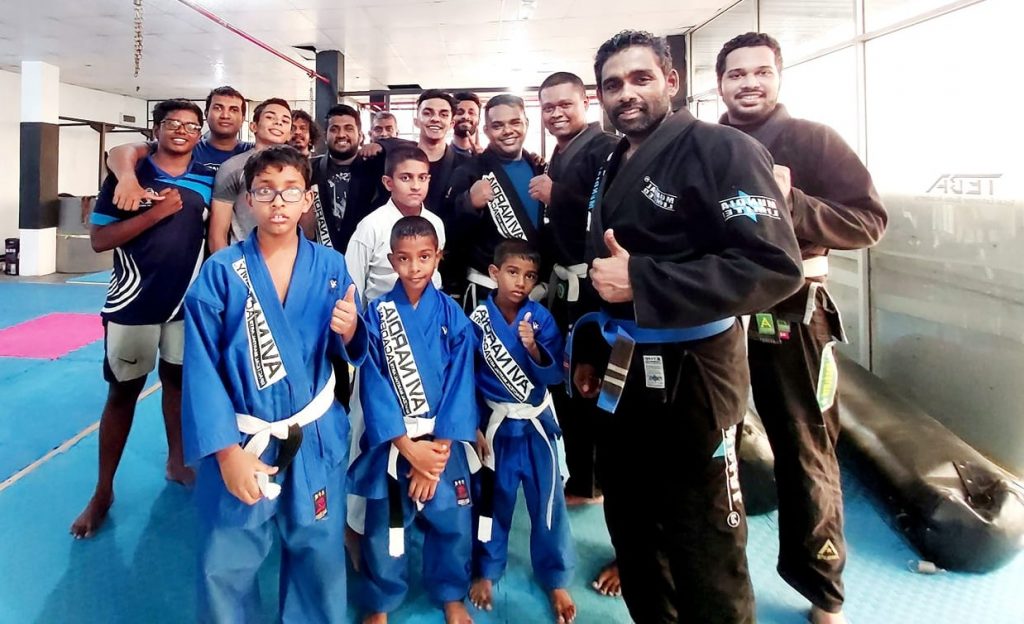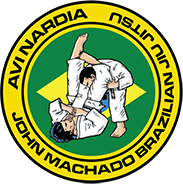
Brazilian Jiu-Jitsu Sri Lanka , we have affiliated with Professor John Machado and Prof Avi Nardia Brazilian Jiu Jitsu Academy .
BJJ (Brazilian Jiu Jitsu) is believed to have originated in Brazil and is considered to be one of the best forms of martial arts in the world. It is often said that if you are physically small or bodily petite, but have mastered BJJ (Brazilian Jiu Jitsu, then you can fight a person double your size. BJJ is based on the technique that immobilizes the opponent. It teaches joint locks, chokeholds, and the art to beat an opponent having more physical prowess. BJJ is considered to have the best self-defence techniques in the world.
BJJ is played on a mat. Every time a person enters the field of play, i.e. the mat, bowing to the mat, as a mark of respect at the start of the game is mandatory. The basic objective of Brazilian Jiu Jitsu is to use hands and legs to lock and immobilize the opponent. Different BJJ techniques like pull guard, close guard, scissor guard, full mount, joint locks, etc., are used to cramp the opponent, hence seizing his mobility. The intricacies of this game and its laws can be understood by reading this brief but informative tutorial.
History of Brazilian Jiu Jitsu
Jiu Jitsu literally means ‘gentle art’. Jiu Jitsu originated in Japan and was practised there for long years. After that, a major evolutionary breakthrough took in the form of Judo, a newly evolved style. Jigoro Kano created a new style of martial art from jiu-jitsu, which he called Kodokan judo. In 1897, Mitsuyo Maeda started training with Kano.
Furthermore, Maeda went to Brazil to help establish a Japanese colony. It was at that place, Maeda met Gastao Gracie. Gastao coordinated with Maeda to create and modify the colony and in return of this favour, Maeda taught Gastao this new form of jiu-jitsu.
From these fundamental techniques, Gracie’s family practised and evolved the Kodokan judo to Brazilian Jiu Jitsu.
Belt Levels in Brazilian Jiu Jitsu
White belt
White belt is the beginning rank for all Brazilian jiu-jitsu students.
White belt is the first belt within Brazilian jiu-jitsu. The rank is held by any practitioner new to the art and has no prerequisite. Some instructors and other high-level practitioners think that a white belt’s training should emphasize escapes and defensive positioning since a white belt will often fight from inferior positions, especially when training with more experienced practitioners.
Most academies will additionally require that a white belt level practitioner works to obtain a well-rounded skills set, with a knowledge of basic offensive moves, such as common submissions and guard passes.
Blue belt
The IBJJF requires a practitioner remain a blue belt for a minimum of 2 years.
Blue belt is the second adult rank in Brazilian jiu-jitsu. At the blue belt level, students gain a wide breadth of technical knowledge and undertake hundreds of hours of mat-time to learn how to implement these moves efficiently. Blue belt is often the rank at which the student learns a large number of techniques.
The IBJJF requires that a practitioner be at least 16 years old to receive a blue belt, thereby officially entering into the adult belt system.
Purple belt
The IBJJF requires a practitioner remain a purple belt for a minimum of 1.5 years.
Purple belt is the intermediate adult ranking in Brazilian jiu-jitsu. The purple belt level practitioner has gained a large amount of knowledge, and purple belts are generally considered qualified to instruct lower-ranked students. In other martial arts, students with a similar amount of experience are often ranked as a black (instructor) level belt.
The IBJJF requires student to be at least 16 years old and recommends they have spent a minimum of two years ranked as a blue belt to be eligible for a purple belt, with slightly different requirements for those graduating directly from the youth belts.
Brown belt
The IBJJF requires a practitioner remain a brown belt for a minimum of 1 year.
Aside from the exceptional belts awarded at the highest levels, brown belt is the highest ranking color belt in Brazilian jiu-jitsu. Brown belt typically requires at least five years of dedicated training to achieve. It is often thought of as a time for refining techniques.
The IBJJF requires that students be at least 18 years old and recommends they have spent a minimum of 18 months as a purple belt to be eligible for a brown belt.
Black belt
The IBJJF requires a practitioner remain a black belt for a minimum of 31 years.
As with many other martial arts, the black belt is the highest common belt within Brazilian jiu-jitsu, denoting an expert level of technical and practical skill. Estimates of the time required to achieve the rank vary, but all holders of this rank have thousands of hours of experience. Brazilian jiu-jitsu black belts are often addressed within the art as professor, although some schools and organizations reserve this honorific for more senior black belts.
The IBJJF requires that a student be at least 19 years old and recommends they have spent a minimum of 1 year ranked as a brown belt to be eligible for a black belt.

Affiliated with : Avi Nardia , John Machado Brazilian Jiu-Jtisu and Anjula Amarasinghe Brazilian Jiu-Jitsu Tactical Training Team .

Avi Nardia KAPAP Combative
